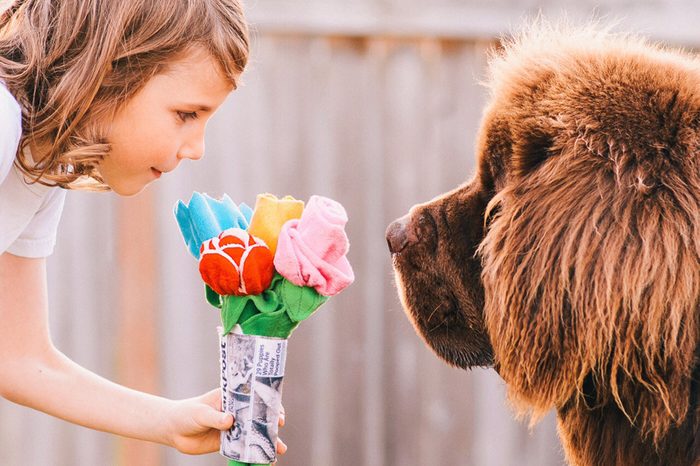
This is what your dog’s body language really means
Whether they’re running and playing at the dog park or giving a warning growl, dogs seem like they’re pretty good at communicating with one another, but what do your dog’s facial expressions really mean? Over thousands of years of living with humans, dogs have developed a range of facial expressions, and they’ve become pretty good at communicating with us too.
Humans have made understanding dog behavior an entire industry, and anyone who owns a dog has definitely wondered about the answers to questions like “Why does my dog follow me everywhere?”,” Why do dogs like squeaky toys?”, “Why do they drag their butts”, “Why does my dog stare at me?”, “Why do dogs lick us?”, “Why do dogs lick their paws?“, “Do some dogs also like cats?“, or “Why do dogs hate cats?”
We have a ways to go before dog-to-human interaction is fluent in both directions, but fortunately, there are experts out there who have dedicated their lives to figuring out dog body language and dog expressions. Turns out, there’s a big difference between how your dog talks to other dogs and how it talks to you. Some studies even show that dogs prefer happy human faces to angry ones, so maybe they really do know what we’re thinking! And maybe it’s time we learned the things dogs wish we knew. From puppy dog eyes to raised ears, here’s what your dog’s facial expressions really mean.
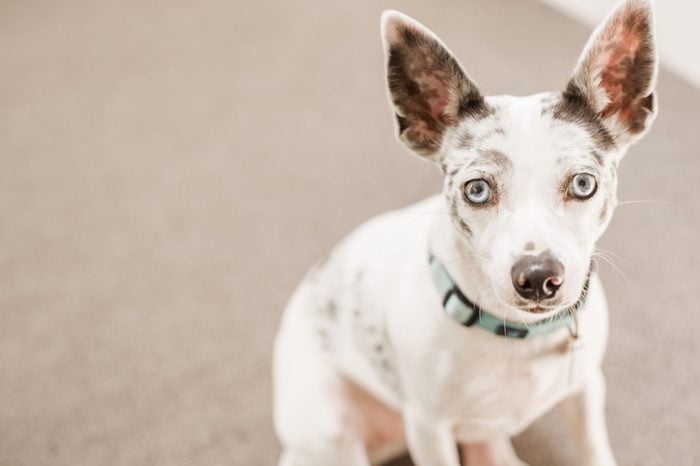
1. Making eye contact
A perfect example of the dichotomy between dog-to-dog and dog-to-human facial expressions is eye contact. Between dogs, eye contact signals aggression, according to Wag, a site that offers services like dog-walking and pet-sitting. Between humans, eye contact is an integral part of communication. We reward eye contact from other humans as well as dogs.
After humans domesticated them, dogs developed an array of facial expressions. They also acquired the ability to use their gaze to win approval from and show love for their humans. Here are some things your dog knows just by looking at you.
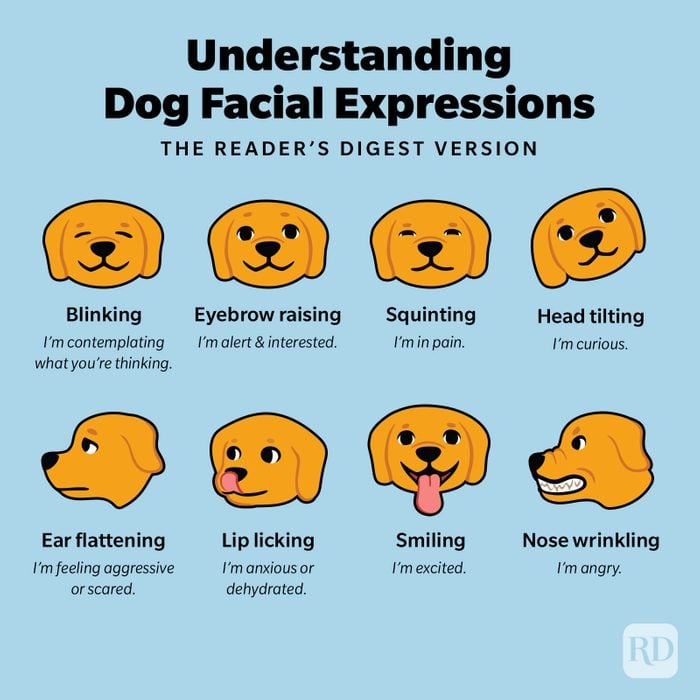
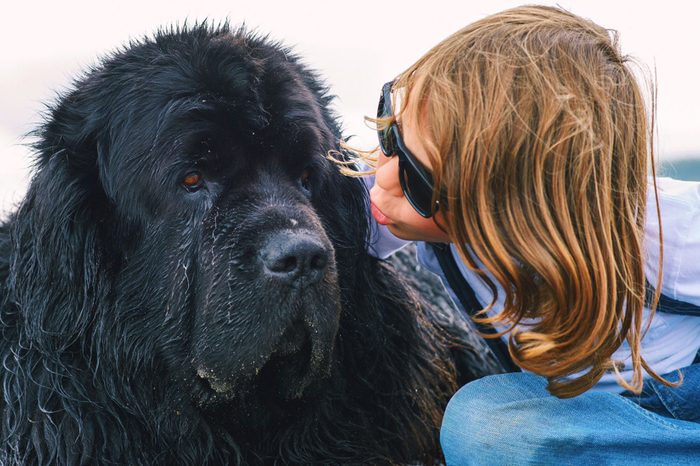
2. Breaking eye contact
Understanding what your dog’s facial expressions really mean also involves knowing what it means when your pooch breaks eye contact. When dogs stare at each other, they’re engaging in a power struggle that won’t end until one or the other breaks the gaze—and a fight could break out.
With humans, dogs are perfectly comfortable breaking eye contact, and in no way is it a prelude to trouble. Rather, it indicates a comfortable rapport between a dog and its person. Here are more unbelivable facts you probably never knew about your pooch.
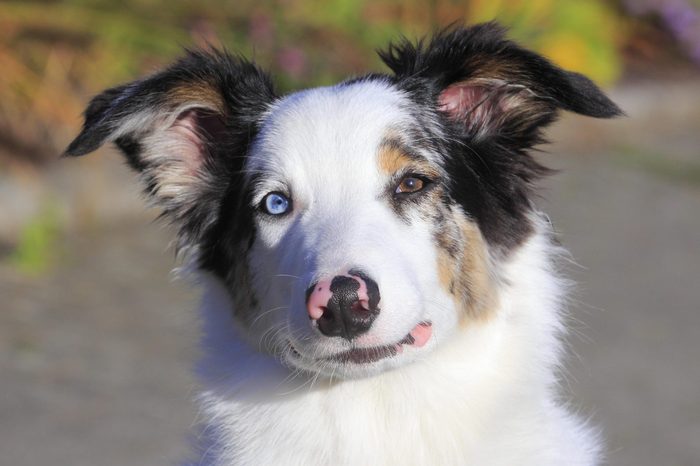
3. Blinking or squinting during eye contact
If a dog blinks while making eye contact with you, he may be contemplating what you’re thinking, according to Danielle Bernal, a veterinarian with Wellness Natural Pet Food. This dog expression might show up if you’ve just given a command.
The same is true of squinting during eye contact, says Michael Schoeff, the proprietor of Premier Pups. “I’d read it as a sign of appeasement,” he says. “And that’s a good thing. Your dog lives to appease his human.” And let’s be honest: You live to pamper your pup, which is why it costs so much to own a dog.

4. Squinting or blinking in general
You’ve probably wondered why your dog makes weird faces. It could be because something is wrong. Squinting and repetitive blinking can mean something entirely different when a dog is not looking into your eyes, Schoeff explains. Squinting can signal pain or illness, and rapid blinking can indicate stress or fear. Better check to make sure your furry friend has avoided these foods dogs can’t eat, just to be safe.
Here’s another fun fact: When a dog opens its eyes wide at another dog, it can signal aggression.
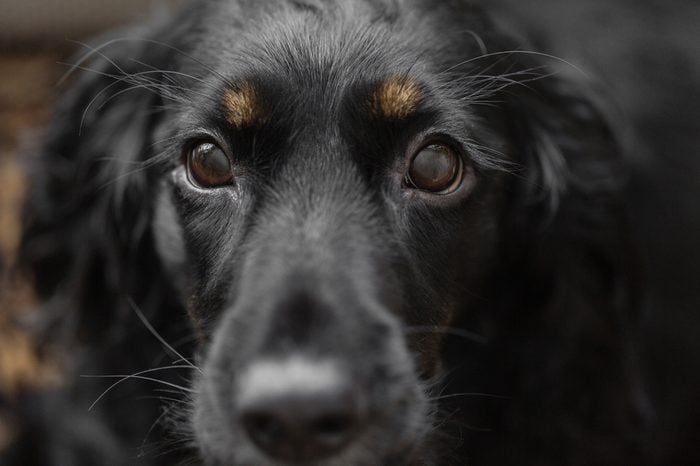
5. Eyebrow-raising
When your dog raises one eyebrow—or both—while making eye contact, it’s a sign of alertness and interest, says Schoeff. Here’s an opportunity for you to engage with your pup, maybe teach it a new trick. Do dogs mimic facial expressions? Try giving them the old eyebrow wiggle and see what happens! After all, dogs have superpowers.
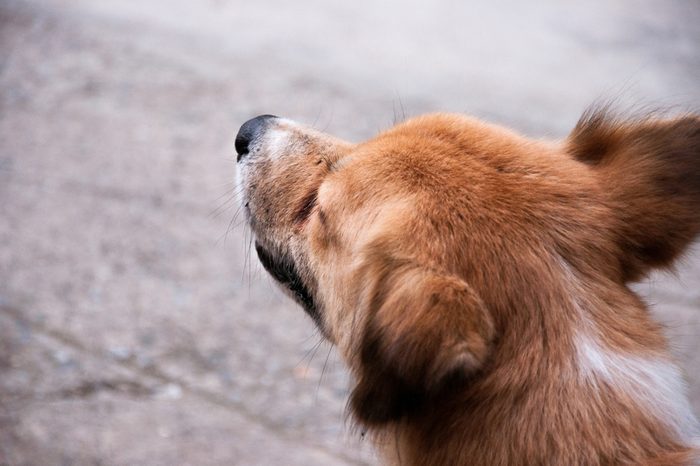
6. Avoiding eye contact
A dog who avoids eye contact is likely having trust issues. “Dogs are aware that eye contact with humans signals trust and comfort,” Schoeff explains. A dog that avoids eye contact with humans is doing his best to avoid any kind of interaction, whether negative or positive. This can be common in rescue dogs, especially those who have had a tough life before finding their forever homes. Keep an eye on what your dog’s facial expressions really mean with these signs that your dog trusts you.
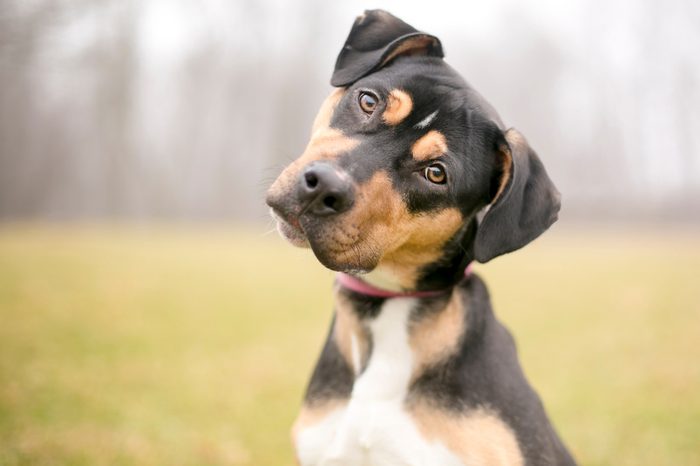
7. Tilting its head
That adorable head tilt? It’s exactly what it looks like, according to Schoeff: It means your dog is curious. Don’t miss these secrets dog trainers would never tell you for free.
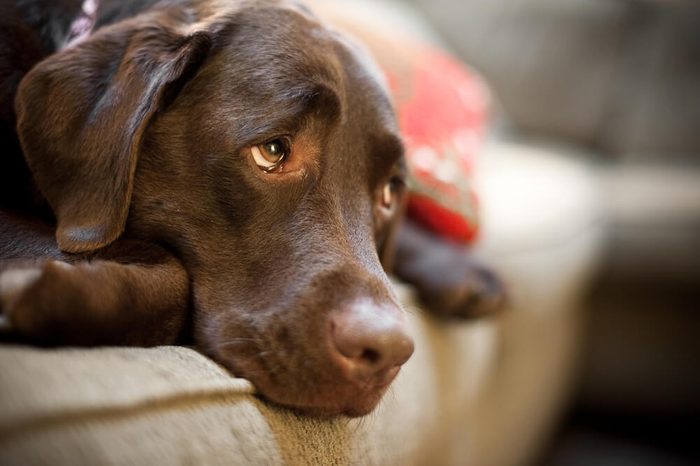
8. Lowering its head
When your dog lowers or bows its head while gazing up at you, it’s an act of submission, explains Schoeff. It’s not all that different from blinking or squinting during eye contact. Consider this a sign of a healthy dog-human relationship, like keeping your dog busy while you’re away.
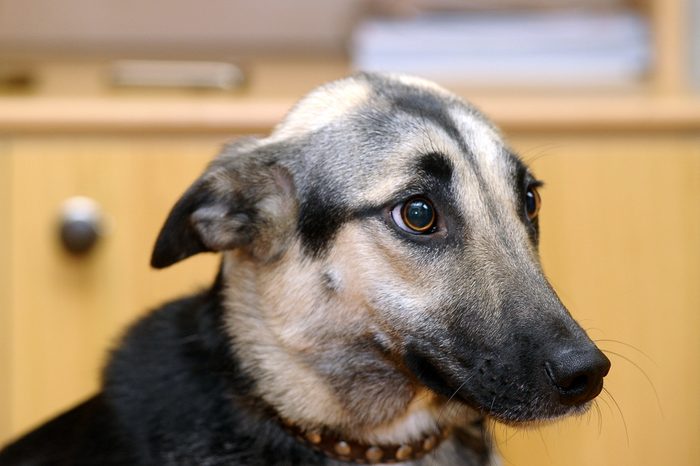
9. Flattening its ears
Watch it: This isn’t a good sign. If you see a dog pulling both ears tight against his head, it could be a sign of aggression or of fear. Alternatively, it could be a sign your dog has an ear infection, says Schoeff.
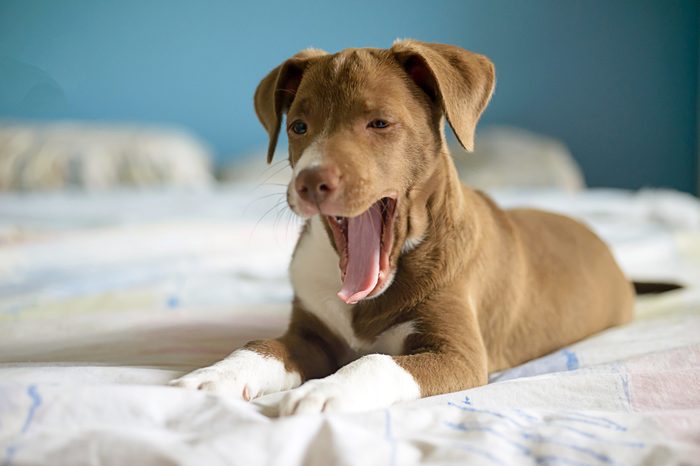
10. Yawning
Yes, a yawn could indicate tiredness, Bernal says. But it can also be associated with moments of stress, so look for context clues to figure out what your dog’s facial expressions really mean. Here’s how to find out what your dog really wants from you.
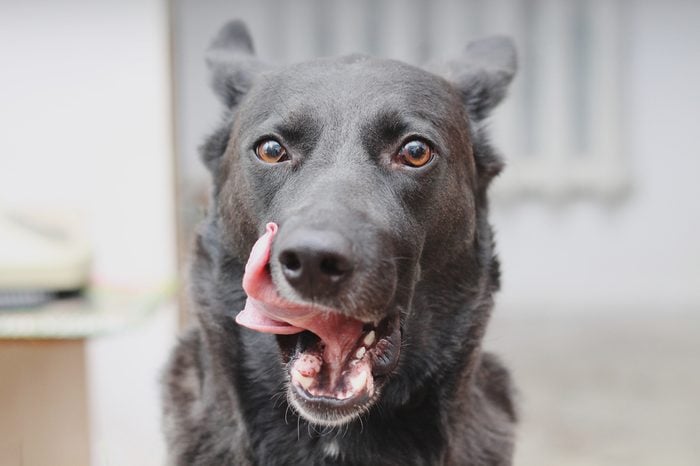
11. Lip-licking
A dog that’s licking its lips can be communicating a desire to submit to its human, Bernal tells us. Or it could indicate anxiety or dehydration, depending on the context. If nothing anxiety-provoking is happening at the moment, consider it a positive form of doggie communication—and make sure your pal’s water bowl is full!
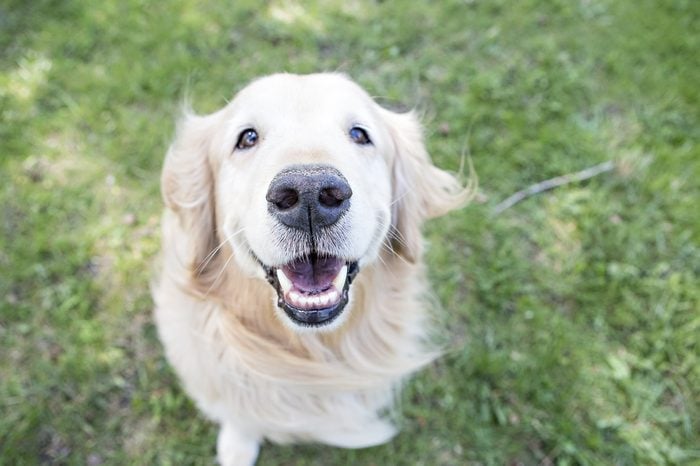
12. Smiling or grinning
Yes, dogs smile, although it doesn’t necessarily signify happiness, contentment, or agreement. When a dog lifts its lips to show its canine teeth and incisors, it’s a sign of excitement, says Bernal. This makes sense when you consider that pups tend to smile while out on walks or romping with pals at the dog park. A grinning dog face could also be a sign of submissiveness, but that’s usually when a dog is signaling to other dogs, not humans. You won’t want to miss these secrets your dog’s tail is trying to tell you.
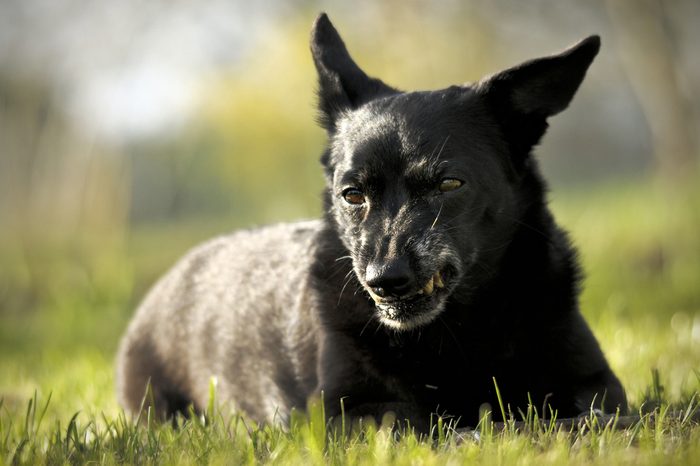
13. Nose wrinkling
You don’t need a dog expressions chart or canine behavioral specialist to recognize when your dog’s smile is more of a snarl, says Bernal. When your dog pulls its lips up vertically to display its front teeth while also wrinkling its muzzle, it’s angry—especially when it raises its ears up and stares steadily. There’s a good chance a growl is coming, and you’ll need to de-escalate the situation. You wouldn’t want to make these mistakes every dog owner makes.
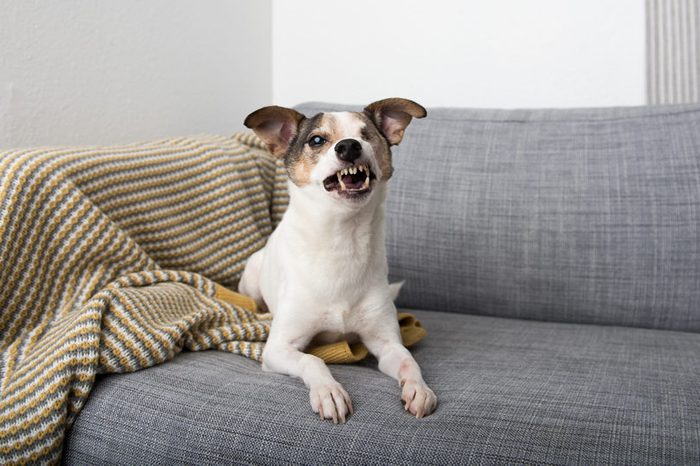
14. Grimacing
In humans, we understand the difference between a smile and a grimace. The same applies to dogs. When your dog draws its lips back horizontally so that you can see all its teeth, it indicates discomfort or fear, Bernal explains. This becomes even more obvious when it’s accompanied by ear-flattening. Make sure you know these signs your dog is mad at you.
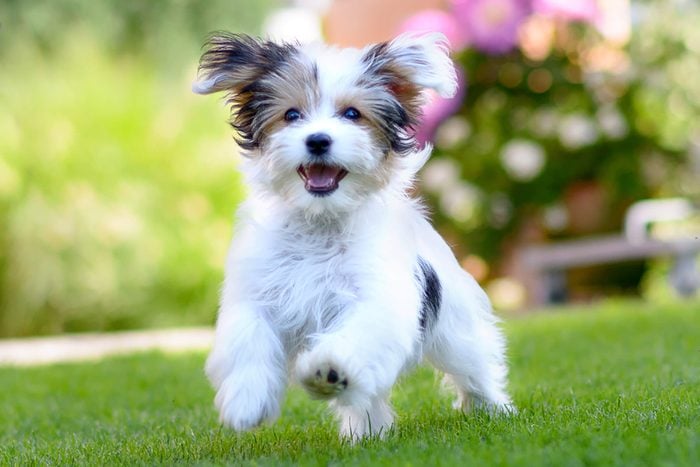
15. When in doubt, consider Fido’s body language
Doggie facial expressions should be read in context, says Russell Hartstein, a certified dog and cat behaviorist and trainer. For example, a smile might indicate fear or aggression if the dog’s ears are flat or it’s growling or whimpering. But a smile on a relaxed and wiggly dog signals that all is good. Next: explore the reason for dog hiccups!
Now that you’ve mastered this unspoken dog language, don’t miss these other secrets your pets won’t tell you.
Sources:
- Science Direct: “Human facial expression affects a dog’s response to conflicting directional gesture cues”
- Wag: “Why do dogs make eye contact?”
- Danielle Bernal, veterinarian with Wellness Natural Pet Food
- Michael Schoeff, proprietor of Premier Pups
- Russell Hartstein, certified dog behavior consultant and founder of Fun Paw Care
Next: Find out how long are dogs pregnant and when will you see those cute puppies!
